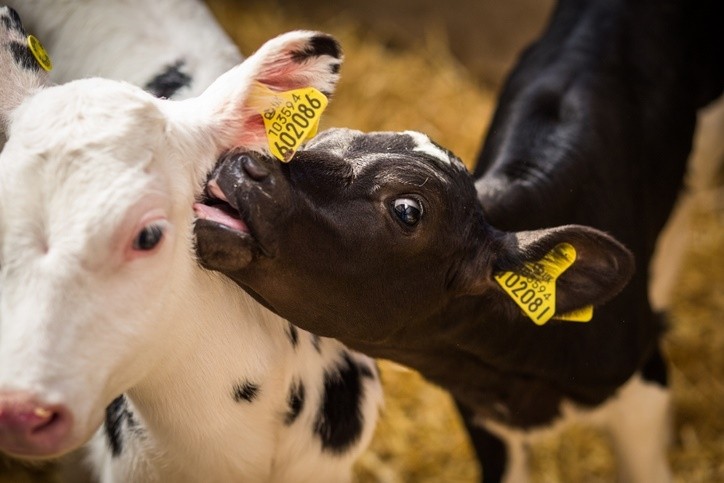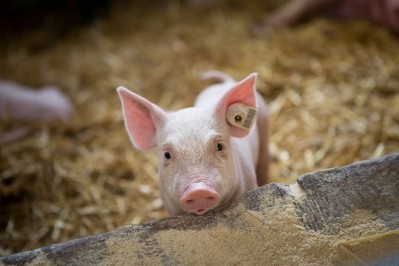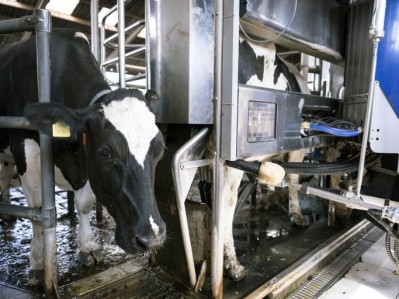Sodium butyrate may boost gain, feed efficiency in weaned heifers

Researchers with the University of New Hampshire examined the use of varying levels of sodium butyrate in the diets of weaned heifers to improve animal performance, digestion and health. The group published details of its research in the Journal of Dairy Science.
The goal of the feeding study was to establish the influence of sodium butyrate (SB) on “growth performance, nutrient digestibility and health of post-weaned dairy heifers,” the researchers said in the study.
The research group has a background in evaluating cattle diets, said Peter Erickson, corresponding author and professor and extension dairy specialist at the University of New Hampshire. “My laboratory conducts quite a bit of research in the feeding of calves and heifers,” he added.
The researchers found that adding the supplemental SB to the diets increased average body weight and total bodyweight gain. Feed efficiency also improved as more SB was added to the feed.
However, the supplemented feed did not influence heifer skeletal growth or the concentration of plasma urea nitrogen, they said. Blood glucose concentration dropped linearly, while β-hydroxybutyrate (BHB) increased as the amount of dietary SB grew.
Although more research into the use of SB is needed, the implication from the feeding trial at this stage is that producers could start adding SB at about 0.75g SB/kg of BW to the diets of post-weaned heifers, Erickson told FeedNavigator.
The research project saw some financial support from Nutriad.
Sodium butyrate
Raising replacement heifers accounts for about 15 to 20% of expenses on a dairy farm, said the researchers.
Part of that process involves establishing a “well-developed, functional rumen” for dairy calves, they said. Rumen development is necessary to support growth performance and feed efficiency – which can lower the cost of replacement heifers.
Boosting calf feed intake “stimulates” the growth of the ruminal microbial population, carbohydrate fermentation and the generation of volatile fatty acids (VFA) in the rumen, they said. The primary VFA produced include acetate, propionate and butyrate.
Butyrate supports the development of the rumen epithelium and the papillae that are embedded on the surface of the epithelium, they said.
The papillae are involved with absorption and have a “high affinity” for VFA, while “butyrate stimulates papillae growth and elongation, which provides a greater surface area for nutrient absorption.”
Sodium butyrate is a commercially available form of butyrate that has been linked to growth rate improvement, feed efficiency and gut health, the researchers said. Calves that are intraruminally infused with sodium butyrate have better bodyweight gain and papillae growth than those receiving sodium acetate, propionate, chloride or glucose.
Similarly, adding SB to milk replacer (MR) improved average daily gain (ADG) along with overall bodyweight, bodyweight gain and feed efficiency compared to calves on a non-supplemented diet, they said. Sodium butyrate use also tends to lower incidence of scours.
The additive also may stimulate epithelial growth, they said. In previous research, when calves were given the additive in milk replacer they had “increased mitotic and decreased apoptotic indices in the small intestine,” compared to calves on a control diet.
Adding the supplement to starter grain supported rumen epithelium development while adding it to milk replacer improved small intestinal development and increased villi height, they said.
However, little is known about what effect the additive may have when used with post-weaned heifers, the researchers said. The rumen is close to full development when heifers are in the post-weaning stage but use could improve additional rumen development and potentially support the repair of damaged epithelium.
The researchers hypothesized that as more SB was added to the feeds, heifer nutrient digestibility and growth performance would improve.
Feeding trial details
In the feeding trial, 40 heifers about 84 days old were given one of four diets for a period of 14 weeks, the researchers said. The diets included a control and that diet with 0.25g of SB/kg of body weight (BW) (0.25SB), 0.50g of SB/kg BW (0.50SB) or 0.75g of SB/kg BG (0.75SB).
The additive sodium butyrate was mixed in a soybean meal top dress and added to the total mixed ration, they said. Feed intake and refusals were measured daily to establish dry matter intake (DMI).
Samples of the feed, orts and refused feed were collected for analysis, they said. Heifers were weighed and skeletal measurements – including high height, withers height, heart girth and body length – were noted at the start of the feeding trial and weekly throughout the study.
Blood samples were taken weekly during the feeding trial for analysis and plasma was checked for glucose and plasma urea nitrogen (PUN), they said.
A digesta marker was used to estimate apparent total-tract nutrient digestibility from day 47 through day 54, the researchers said. Fecal samples also were collected and checked for crude protein, ADF, NDF, fat, organic matter and starch levels.
Additional fecal samples were taken at the start of the feeding trial and on a biweekly basis to check for coccidian oocysts, they said.
“Dairy heifers can be very prone to coccidiosis and many countries, especially in the EU have banned preventatives,” Erickson added regarding why coccidia levels were recorded. “We thought it would be worthwhile to look at.”
Results
Overall, average body weight increased and final bodyweight tended to be higher as more sodium butyrate was added to the feeds, said the researchers. Bodyweight gains increased linearly.
“We are conducting another experiment to further investigate the effect,” Erickson said regarding why average daily gain and final body weights for cows on the 0.25SB diet were lower than the control group. “The gain values for those treatments cannot be taken out as we tested linear and quadratic responses. In other words, did adding Na butyrate result in an increase in a various component we tested, or did it peak and then drop. So we really can't pull out individual treatments.”
Feed efficiency also tended to improve as more of the supplement was used, the researchers said. However, heart girth and body length were similar for heifers on all diets, as were overall gains for withers height and hip height.
Coccidia was found but counts were low and varied, they said. There was a quadratic effect that suggested that the 0.25SB diet was most effective in terms of limiting coccidian levels.
Glucose levels fell as more SB was added to the diets and plasma urea nitrogen concentrations remained similar among the feeds, thy said. Average BHB concentrations grew linearly as more SB was used.
No differences in digestibility related to the use of the feed supplement were noted, they added.
However, more research is needed to explore the usefulness of SB to support feed efficiency and growth performance while reducing coccidiosis and scours outbreaks, the researchers said.
There are several aspects the research group is continuing to explore in relation to this area, said Erickson.
“We are evaluating the use of the 0.75g SB/kg of BW treatment with or without Monensin,” he said. “Most of the research with sodium butyrate has been with pre-weaned calves it has been very favorable for those calves… We are the first to look at it in the post-weaned heifer.”
Source: Journal of Dairy Science
Title: Supplementation of sodium butyrate to postweaned heifer diets: Effects on growth performance, nutrient digestibility, and health
Authors: E. Rice, K. Aragona, S. Moreland, P. Erickson
DOI: available online before print: doi.org/10.3168/jds.2018-15525















